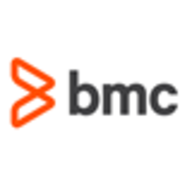

Find out what your peers are saying about Camunda, BMC, Temporal Technologies and others in Process Automation.
The main return on investment with Helix Control-M has been a reduction in downtime and minimization of manual interventions, which has improved our operational efficiency.
You can run a million batch jobs or tasks at night when all of your highly skilled people are at home sleeping.
By implementing automation tools, you can minimize human errors and improve efficiency.
They quickly evolve with changing technology trends, easily adopt new features, and incorporate them into the product.
The technical support is very polite, helpful, and available 24/7.
If something fails at 3 AM in the morning, you need to fix it and get it back up and working really quickly.
The Ansible sales and technical support services need significant improvement.
I have not escalated any questions to the Red Hat support team regarding Red Hat Ansible Automation Platform, as their modules are professional and complete.
Our license doesn't limit our ability to configure Control-M as needed, allowing us to easily create new agents or environments.
It can absorb more workload wherever needed.
As the workload on Control-M increases, its scalability is much higher.
Ansible can face scalability issues, such as limitations when trying to scale up infrastructure.
The downtime is higher compared to AWS.
The testing and development phases need to be more rigorous before releasing patches.
Once properly implemented, the system becomes very stable, which is one of its strongest attributes.
The stability of Red Hat Ansible Automation Platform is excellent, deserving a 10 out of 10 rating.
They could provide more documentation and tutorials to make the initial setup easier to understand.
We've experienced main problems with MFTE where having one setup means when an error occurs, the entire service goes down.
Documentation should be maintained for all versions since they provided the application.
The dashboarding capabilities should be improved by bringing CMP (Cloud Management Platform) into Red Hat Ansible Automation Platform.
Red Hat Ansible Automation Platform could improve by creating modules for upcoming AI and ML tech stacks.
More library support for microservices architecture and Kubernetes would be helpful.
The licensing cost is very high, and they often consider switching to IBM Workload Scheduler or other options.
Control-M tends to be more expensive compared to other solutions, but users get great value from it.
Control-M is among the highest-priced solutions in the market.
The pricing is high, and since I'm not using all functionalities, it would be better if the price depended on the functionalities used.
The cost of combining Red Hat Developer Hub and Ansible is extremely high, which presents a significant challenge with the Red Hat product.
It is free and open-source for testing or small labs.
Automation is more advanced, deployment is fast, and version control has been simplified.
The user interface is comprehensive and lets me view all my jobs on one page, monitor everything, and access the job history.
It is easy to integrate Control-M with technologies for data ops or DevOps processes as things change, and it is not complex compared to other workload automation tools available in the market.
The agentless architecture of Red Hat Ansible Automation Platform, using the SSH key, makes it passwordless and allows us to push configurations with one click, creating a major advantage.
The automation capabilities streamline deployment processes, providing reliability and reducing manual intervention and errors.
It makes it simple to develop Ansible playbooks and roles, which aids in simplifying my daily administrative tasks.
| Product | Market Share (%) |
|---|---|
| Control-M | 4.6% |
| Camunda | 24.8% |
| Temporal | 7.4% |
| Other | 63.2% |
| Product | Market Share (%) |
|---|---|
| Red Hat Ansible Automation Platform | 16.1% |
| Microsoft Configuration Manager | 11.5% |
| AWS Systems Manager | 9.9% |
| Other | 62.5% |


| Company Size | Count |
|---|---|
| Small Business | 24 |
| Midsize Enterprise | 12 |
| Large Enterprise | 113 |
| Company Size | Count |
|---|---|
| Small Business | 24 |
| Midsize Enterprise | 8 |
| Large Enterprise | 48 |
Control-M by BMC is engineered to manage hybrid cloud workflows, offering orchestration capabilities starting at $29,000 annually. Aimed at helping growing teams, it efficiently supports cross-environment scheduling and automation needs.
Control-M offers robust cross-platform scheduling, automation, and integration with applications such as SAP and Informatica. Users appreciate its ease of use with a graphical interface, centralized management, and monitoring capabilities. Advanced features, including Managed File Transfer, automated error handling, and real-time alerts, enhance productivity. The ability to unify workflows and support diverse environments makes Control-M a trusted tool in many sectors. While improvements in reporting flexibility and API integration with tools like ServiceNow are needed, addressing performance issues during upgrades could enhance its value. Offering improved support for new technologies and cloud environments is beneficial, with cost-effectiveness being a consideration.
What are the key features of Control-M?Control-M is leveraged in industries like finance for enterprise scheduling and data management, supporting mainframe, Linux, Unix, Windows, and cloud platforms. It contributes to workflow orchestration and workload automation, improving operational efficiency and enhancing IT infrastructure across those environments.
Red Hat Ansible Automation Platform is a powerful network automation solution that allows organizations to handle every aspect of their application launch process within a single product. It enables users to share their automations so that teams within an organization can collaborate on various projects with ease. Ansible Automation Platform is designed to be used by all employees involved in the network automation process.
Red Hat Ansible Automation Platform Benefits
Some of the ways that organizations can benefit by choosing to deploy Red Hat Ansible Automation Platform include:
Red Hat Ansible Automation Platform Features
Reviews from Real Users
Red Hat Ansible Automation Platform is a highly effective solution that stands out when compared to many of its competitors. Two major advantages it offers are its automation manager and its comprehensive centralized GUI-based management interface.
MD J., a solution architect at STBL, says, “The automation manager is very good and makes things easier for customers with multi-cloud platforms.”
Aankit G., a Consultant at Pi DATACENTERS, writes, “We like the GUI-based interface for the tower. Before, we only had a command-line interface to run all the Ansible tasks. Now, the Ansible tower provides the complete GUI functionality to run, manage, and create the templates and the Ansible jobs. This includes the code and YAML file we can create. The GUI interface is the added advantage of this solution, including some integration with the different plugins.”
We monitor all Process Automation reviews to prevent fraudulent reviews and keep review quality high. We do not post reviews by company employees or direct competitors. We validate each review for authenticity via cross-reference with LinkedIn, and personal follow-up with the reviewer when necessary.